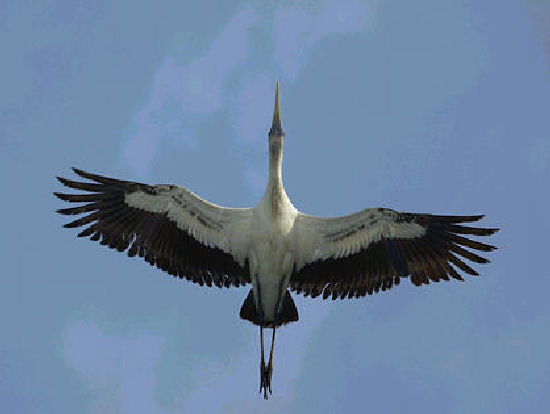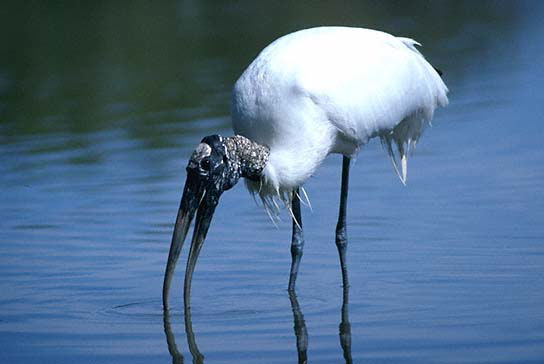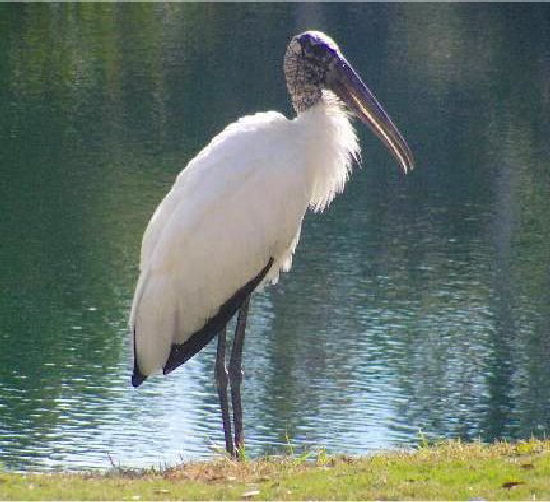Long-legged Waders
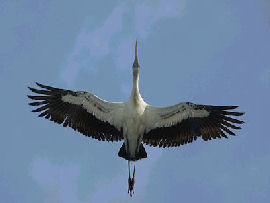 |
Wood Stork
Mycteria americana |
Description
40-44" (1-1.1 m). W. 5'6" (1.7 m).
White with black flight feathers and tail. Head and neck bare, dark
gray. Bill long, stout, and slightly curved; black in adults and
dull yellow in immatures. Unlike herons, storks fly with neck
extended.
Endangered StatusThe Wood Stork is on the U.S.
Endangered Species List. It is classified as endangered in Alabama,
Florida, Georgia, and South Carolina. The numbers of these large
wading birds have declined drastically in recent years due to land
development, logging, and draining of their feeding grounds. There
were an estimated 20,000 breeding pairs in the 1930s, breeding
throughout much of the southeast as far West as Texas. Today's
population of breeding pairs is approximately 5,000. While Wood
Stork rookeries have been protected in recent years, it is the loss
of feeding habitat that has dealt the blow to this species. It has
been estimated that a pair of storks and their young require some
440 pounds of fish during the breeding season, so adequate feeding
grounds are a necessity. |
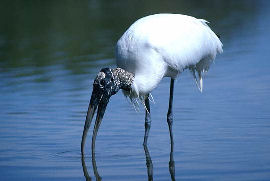 |
Habitat
On or near the coast, breeding chiefly in
cypress swamps; also in mangroves.
Nesting
2 or 3 white eggs on a huge stick
platform in a tree. Nests in colonies.
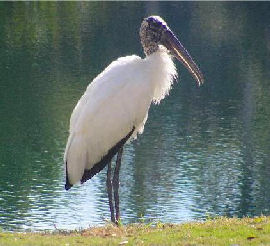 |
RangeBreeds in Florida and Georgia; very rarely
elsewhere along coast from South Carolina to Texas. Outside breeding
season wanders as far as California and Massachusetts (very rarely).
Also breeds in tropical America.
VoiceDull croak. Usually silent except around
nest. Young make clattering noises with their bills. |
Discussion
Formerly called the "Wood Ibis," this
is a true stork. It is easily distinguished from white herons by its
large size, upright posture, dark, naked head and neck, and heavy
bill with a downward curve at the tip. These birds perch motionless
on a bare branch or slowly stalk through marshes in search of food.
They obtain food--mainly fish and snakes--by probing the water with
their bills, locating prey by sense of touch. Expert at soaring,
they are sometimes seen circling high in the air on rising air
currents. They nest in enormous colonies numbering up to 10,000
pairs.




